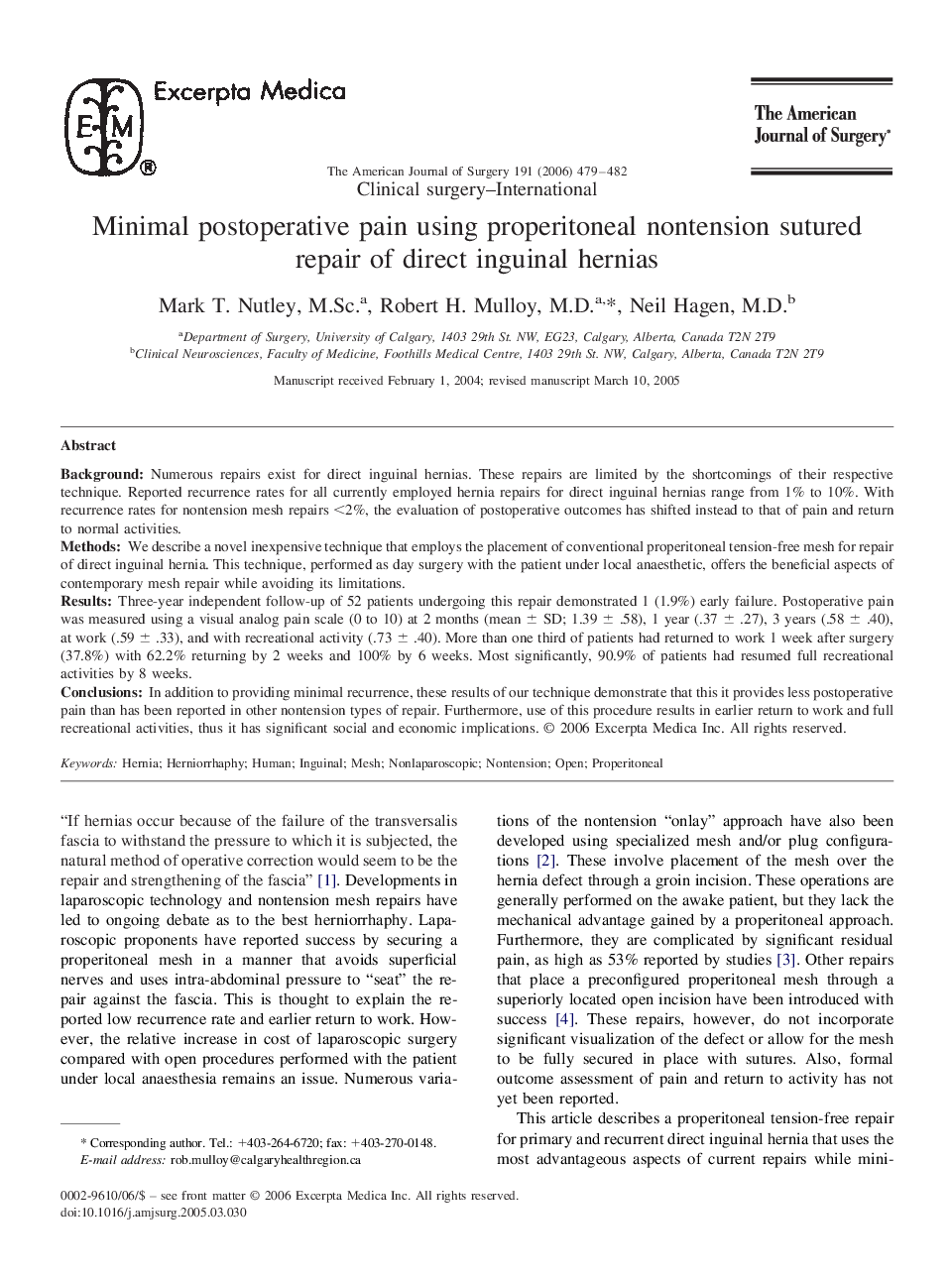| Article ID | Journal | Published Year | Pages | File Type |
|---|---|---|---|---|
| 4282238 | The American Journal of Surgery | 2006 | 4 Pages |
BackgroundNumerous repairs exist for direct inguinal hernias. These repairs are limited by the shortcomings of their respective technique. Reported recurrence rates for all currently employed hernia repairs for direct inguinal hernias range from 1% to 10%. With recurrence rates for nontension mesh repairs <2%, the evaluation of postoperative outcomes has shifted instead to that of pain and return to normal activities.MethodsWe describe a novel inexpensive technique that employs the placement of conventional properitoneal tension-free mesh for repair of direct inguinal hernia. This technique, performed as day surgery with the patient under local anaesthetic, offers the beneficial aspects of contemporary mesh repair while avoiding its limitations.ResultsThree-year independent follow-up of 52 patients undergoing this repair demonstrated 1 (1.9%) early failure. Postoperative pain was measured using a visual analog pain scale (0 to 10) at 2 months (mean ± SD; 1.39 ± .58), 1 year (.37 ± .27), 3 years (.58 ± .40), at work (.59 ± .33), and with recreational activity (.73 ± .40). More than one third of patients had returned to work 1 week after surgery (37.8%) with 62.2% returning by 2 weeks and 100% by 6 weeks. Most significantly, 90.9% of patients had resumed full recreational activities by 8 weeks.ConclusionsIn addition to providing minimal recurrence, these results of our technique demonstrate that this it provides less postoperative pain than has been reported in other nontension types of repair. Furthermore, use of this procedure results in earlier return to work and full recreational activities, thus it has significant social and economic implications.
